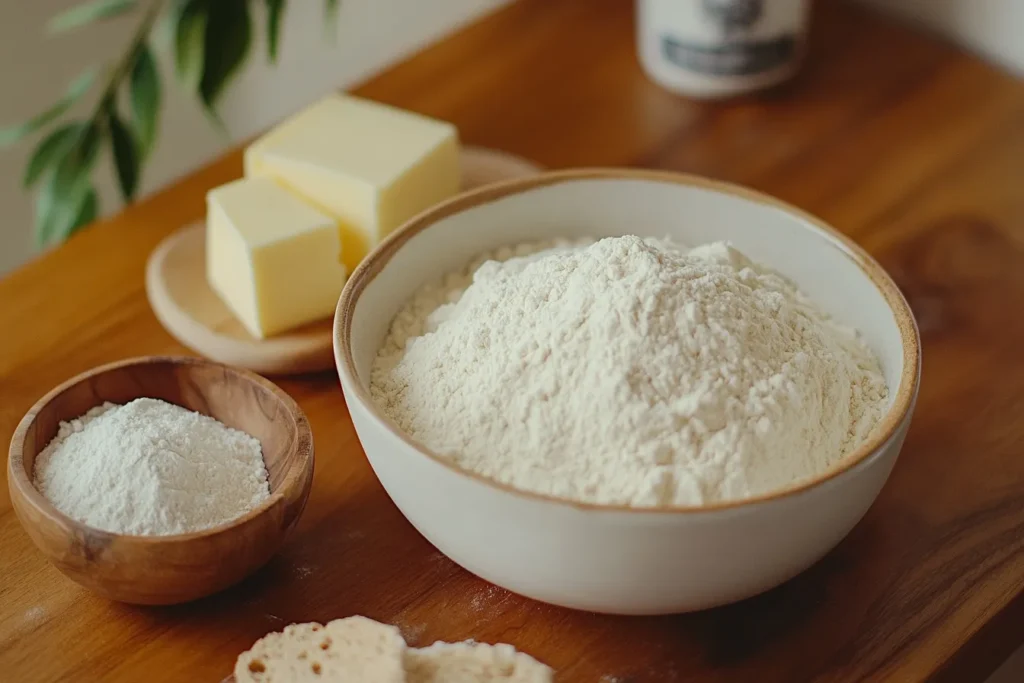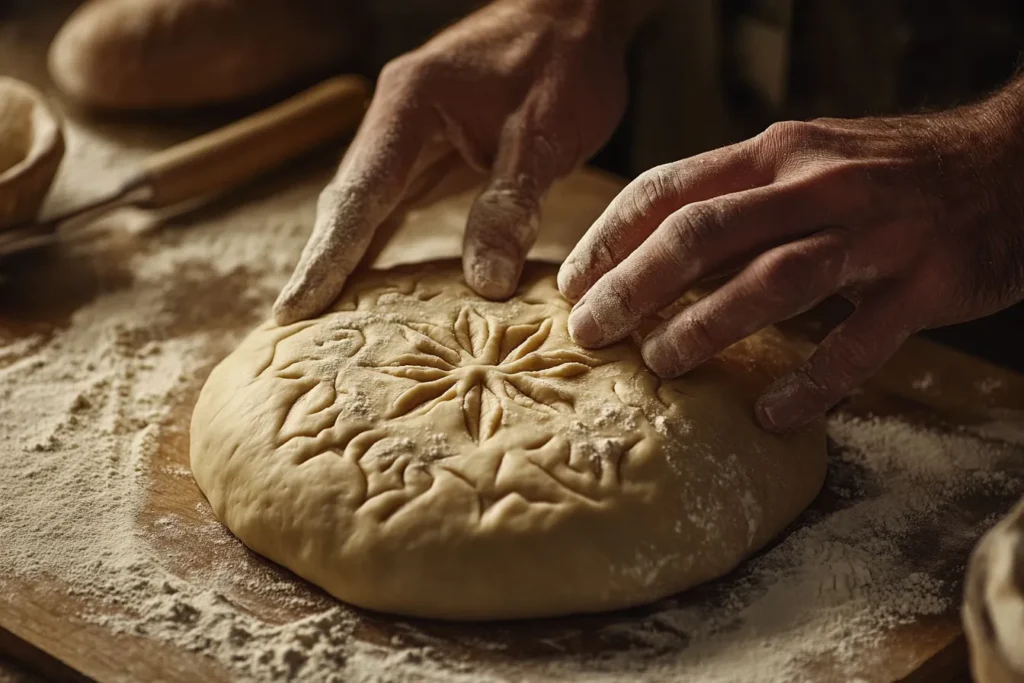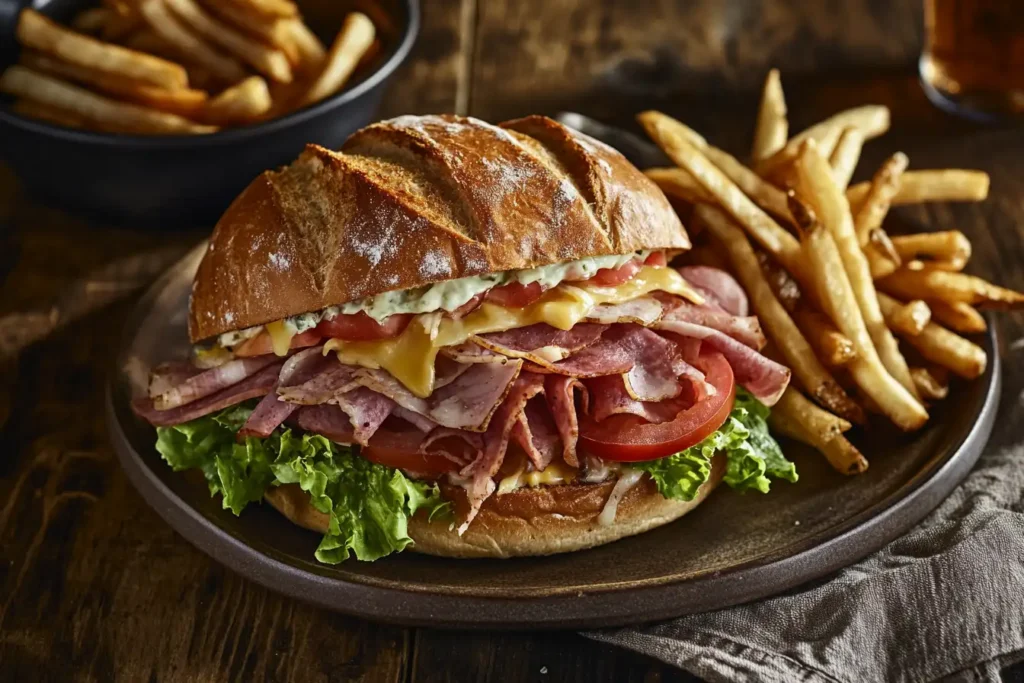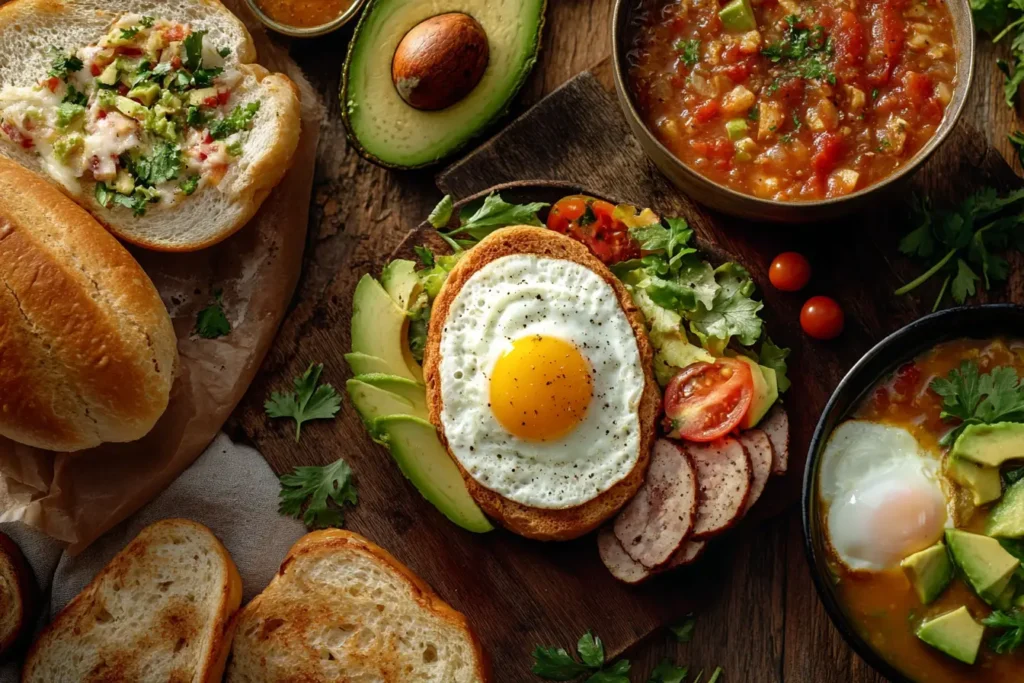Ah, the Kaiser roll—a bread roll so iconic, it has managed to captivate taste buds for centuries. Whether you’re enjoying a hearty deli sandwich, a juicy burger, or simply a slice of buttered heaven, Kaiser rolls hold a special place in the culinary world. Known for their unique star-shaped top, crisp crust, and soft, fluffy interior, Kaiser rolls have transcended their origins to become a staple in bakeries and kitchens worldwide.
But what makes this bread so special? Is it the heritage tied to its creation? The versatility in culinary applications? Or perhaps the simple joy of biting into a perfectly baked roll? In this article, we’ll delve into the rich history, distinct characteristics, and widespread popularity of Kaiser rolls. We’ll also share how they are made, their nutritional value, and their role in various cuisines.
By the end, you’ll not only appreciate Kaiser rolls more but might even be inspired to try baking your own batch or explore their creative uses in your meals. So, let’s roll right into it!
Table of contents
What Makes a Kaiser Roll Unique?
Kaiser rolls stand out from other bread varieties due to their distinct shape, texture, and versatility. They are not merely a vessel for sandwiches but a culinary masterpiece in their own right, with characteristics that have cemented their place in baking history.
Distinctive Shape: The Star Design
One of the most recognizable features of a Kaiser roll is its star-shaped top. This design isn’t just for aesthetics—it has a practical purpose. The grooves and folds of the star pattern create a unique crust-to-crumb ratio, ensuring a delightfully crispy exterior while maintaining a soft and airy interior.
Traditionally, bakers achieved this design by hand-knotting the dough or using a stamp to press the pattern into the roll. Modern production may use automated tools to replicate the shape, but the artistry behind the design remains an enduring symbol of craftsmanship.
Ingredients and Traditional Recipe

Kaiser rolls are made with simple, wholesome ingredients: flour, water, yeast, salt, and a touch of sugar or malt for a hint of sweetness. The dough often includes a small amount of fat, such as butter or oil, to enhance the roll’s softness.
Despite the straightforward ingredients, the preparation process is anything but ordinary. The key lies in balancing the hydration of the dough and the fermentation time to develop the perfect flavor and texture.
Texture and Flavor Profile
The hallmark of a Kaiser roll is its dual texture. The crust is golden and crisp, achieved by baking the rolls with steam to lock in moisture and promote even browning. Meanwhile, the inside remains light, airy, and tender, making it the ideal bread for a variety of uses.
In terms of flavor, Kaiser rolls are mild and slightly nutty, allowing them to pair harmoniously with savory and sweet fillings alike. Whether topped with sesame or poppy seeds or left plain, their balanced taste makes them a favorite among bread lovers.
How Kaiser Rolls Are Made
The process of making Kaiser rolls combines tradition, technique, and a touch of artistry. Whether crafted in a professional bakery or in your home kitchen, achieving that iconic texture and shape requires careful attention to detail.
The Classic Kaiser Rolls Recipe: Step-by-Step Process
Making Kaiser rolls starts with simple ingredients and follows a straightforward method. Here’s a step-by-step guide to their creation:

- Mixing the Dough
Begin by combining all-purpose or bread flour, water, yeast, salt, and a small amount of sugar or malt in a mixing bowl. Some recipes include butter or oil to add richness to the dough. - Kneading
Knead the dough until it is smooth and elastic. This step is crucial for developing the gluten structure that will give the rolls their airy yet sturdy texture. - First Rise
Allow the dough to rest and rise in a warm, draft-free area for about 1-2 hours, or until it has doubled in size. - Shaping the Rolls
Divide the dough into equal portions and shape them into balls. To create the signature star design, use one of two traditional methods:- Hand-knotting: Roll each dough ball into a rope, tie it into a loose knot, and tuck the ends underneath to form a star shape.
- Stamping: Use a Kaiser roll stamp to press the pattern into the top of each dough ball.
- Second Rise
Place the shaped rolls on a baking sheet lined with parchment paper and let them rise again for 30-45 minutes. This ensures they puff up nicely in the oven. - Baking
Bake the rolls in a preheated oven at 375°F (190°C) for 20-25 minutes. To achieve a crispy crust, introduce steam into the oven by spraying water or placing a pan of water on the oven floor. - Cooling
Let the rolls cool completely on a wire rack before serving. This helps the crust set and the interior finish its development.
Key Techniques for the Perfect Kaiser Roll
- Steam Baking: This step is essential for a crusty exterior. Steam helps the dough expand before the crust hardens and creates a glossy finish.
- Proper Fermentation: Allowing enough time for both rises ensures the rolls develop their characteristic airy texture and mild flavor.
- Precision in Shaping: The iconic star pattern isn’t just decorative; it influences the roll’s structure and crust formation.
Variations and Modern Twists of Kaiser Rolls
Over time, bakers have introduced variations to the traditional Kaiser roll recipe. Some popular twists include:
- Seeded Toppings: Adding sesame, poppy, or caraway seeds for extra flavor and texture.
- Whole-Grain Versions: Substituting whole wheat flour for part or all of the all-purpose flour for a healthier option.
- Herbed Infusions: Mixing dried herbs or cheese into the dough to create savory rolls with a gourmet flair.
These innovations showcase the adaptability of Kaiser rolls while honoring their classic roots.
Culinary Uses of Kaiser Rolls
Kaiser rolls are a versatile bread that can elevate any meal, thanks to their perfect balance of crisp crust and soft interior. They are a blank canvas for culinary creativity, making them a favorite choice for both professional chefs and home cooks.
Perfect Pairings: Sandwiches, Burgers, and More

The most common use of Kaiser rolls is as a base for sandwiches and burgers. Their sturdy yet tender texture makes them ideal for holding various fillings without becoming soggy or falling apart. Here are some popular pairings:
- Deli Sandwiches: Pile them high with deli meats, cheeses, lettuce, and condiments for a classic lunch option.
- Burgers: Their size and texture are perfect for juicy burgers, whether beef, chicken, or plant-based. The roll complements the patty while soaking up the flavors of sauces and toppings.
- BBQ: The crusty exterior holds up well to saucy fillings, making Kaiser rolls a go-to for barbecue sandwiches.
Kaiser Rolls in Breakfast, Lunch, and Dinner

The Kaiser rolls seamlessly transition through all three meals of the day. Their adaptability means they can complement a variety of dishes:
- Breakfast: Use them as a base for breakfast sandwiches with eggs, bacon, or avocado. They can also be toasted and spread with butter, jam, or cream cheese.
- Lunch: Create hearty subs or light vegetable sandwiches for a midday meal. Their satisfying texture makes every bite enjoyable.
- Dinner: Serve them as a side for soups, stews, or pasta dishes. They’re also excellent for soaking up sauces or as an accompaniment to charcuterie boards.
International Adaptations and Creative Uses
While Kaiser rolls originated in Austria, they’ve been embraced and adapted by cultures worldwide. Each variation reflects regional flavors and preferences:
- In Germany: Known as “Kaisersemmel,” they are often served with bratwurst or as part of a breadbasket in traditional meals.
- In the United States: Kaiser rolls are a staple in delis and burger joints, often customized with toppings like sesame seeds or onions.
- In Fusion Cuisine: Some chefs use Kaiser rolls as a base for creative recipes, like sliders, open-faced sandwiches, or even dessert rolls filled with sweet spreads and fruits.
Beyond traditional uses, Kaiser rolls inspire culinary experimentation. For instance, hollowed-out rolls can be filled with soups or used as edible bowls for dips. The possibilities are endless!
Nutritional Information and Health Benefits of Kaiser Rolls
Kaiser rolls are not only delicious but also provide a variety of nutrients depending on their ingredients and preparation. Whether you’re indulging in a classic white Kaiser roll or opting for a healthier variation, understanding their nutritional profile can help you make informed dietary choices.
Caloric Value and Macronutrient Breakdown
A standard-sized white Kaiser roll typically weighs around 85 grams and contains the following nutritional values:
- Calories: Approximately 220-250 kcal
- Carbohydrates: 45-50 grams
- Protein: 7-9 grams
- Fat: 1-2 grams
The carbohydrate content provides quick energy, while the protein contributes to muscle repair and growth. The low-fat content makes it a lighter bread option compared to enriched or buttery breads like brioche.
Are Kaiser Rolls a Healthy Option?
Kaiser rolls can be part of a balanced diet when enjoyed in moderation. Here’s what makes them a reasonable choice:
- Low in Fat: Unlike croissants or other enriched breads, Kaiser rolls contain minimal fat, making them a leaner option.
- Source of Energy: Their high carbohydrate content makes them suitable for active individuals or those needing a quick energy boost.
- Customizable: By choosing healthier toppings and fillings, you can enhance their nutritional value without compromising taste.
However, standard Kaiser rolls made with refined flour can have a high glycemic index, which may cause blood sugar spikes. For those seeking healthier options, variations made with whole grains or added seeds can provide additional fiber and nutrients.
Healthier Alternatives: Whole-Grain and Gluten-Free Versions
For those with specific dietary needs or preferences, there are plenty of alternatives to the traditional Kaiser roll:
- Whole-Grain Kaiser Rolls
- Made with whole wheat or multigrain flour, these rolls are higher in fiber, which aids digestion and provides sustained energy.
- They also contain more micronutrients like magnesium and iron compared to white flour rolls.
- Gluten-Free Kaiser Rolls
- Ideal for those with celiac disease or gluten sensitivities, gluten-free versions use alternative flours such as rice, almond, or tapioca flour.
- Many bakeries now offer these options to cater to diverse dietary needs.
- Low-Carb Variants
- By using almond or coconut flour, bakers have created keto-friendly Kaiser rolls that appeal to low-carb enthusiasts.
By choosing these alternatives, you can enjoy the beloved Kaiser roll while aligning it with your health goals.
Conclusion: Why Kaiser Rolls Are Here to Stay
The Kaiser roll is much more than a simple bread—it’s a symbol of culinary tradition, versatility, and global appeal. From its origins in 18th-century Vienna to its widespread popularity today, this classic roll has remained a staple in kitchens, bakeries, and restaurants worldwide. Its distinctive star-shaped design, perfectly balanced texture, and mild flavor make it an ideal companion to countless meals, from simple breakfasts to gourmet dinners.
In addition to its rich history, the Kaiser roll continues to evolve, offering healthier and more diverse variations to meet modern dietary preferences. Whether you enjoy it plain, topped with seeds, or as part of a flavorful sandwich, the Kaiser roll remains a timeless bread that brings people together.
So the next time you bite into one, take a moment to appreciate the craftsmanship and legacy behind this beloved roll. It’s a testament to the enduring power of good bread to bring comfort, joy, and satisfaction to our daily lives.
Recipe Articles You May Like
Kaiser rolls are incredibly versatile and pair beautifully with various breakfast options. For a hearty start to your day, consider using them as the base for a flavorful sandwich, such as one made with baked scrambled eggs for sandwiches. Their sturdy yet tender texture also makes them an excellent accompaniment to dishes like the baked potato with scrambled eggs recipe, offering a satisfying blend of flavors and textures. If you’re feeling adventurous, pair Kaiser rolls with bold and smoky breakfast options, such as chorizo and eggs—learn more about perfecting this combination by exploring do you drain the grease from chorizo and eggs?. For additional tips on preparing chorizo to pair with your rolls, check out what is the best way to cook chorizo?. These ideas highlight how Kaiser rolls elevate simple ingredients into delightful culinary creations.
Frequently Asked Questions
A Kaiser roll is distinguished by its unique star-shaped top, either hand-kneaded or stamped, which gives it a signature look. Its golden-brown, crispy crust contrasts with a soft, airy interior, making it a versatile bread. Traditional recipes use basic ingredients like flour, water, yeast, and salt, ensuring a mild flavor that pairs well with various toppings and fillings.
The key difference lies in the texture and design. Kaiser rolls have a crispier crust and a fluffier interior than regular rolls, which tend to be softer throughout. Additionally, the star-shaped pattern of a Kaiser roll sets it apart, adding an aesthetic and structural uniqueness that regular rolls often lack.
Hamburger buns are typically softer, sweeter, and more uniform in shape, designed to hold burger patties without overshadowing the fillings. In contrast, Kaiser rolls are larger, denser, and have a crisp crust, adding a more pronounced texture and flavor to burgers. They are ideal for hearty sandwiches and gourmet burgers.
Kaiser rolls strike a perfect balance between taste and texture. Their mild flavor allows versatility, while the contrast of a crispy crust and tender crumb provides a satisfying bite. The intricate star design not only adds visual appeal but also enhances the crust-to-crumb ratio, making each roll uniquely delightful.
